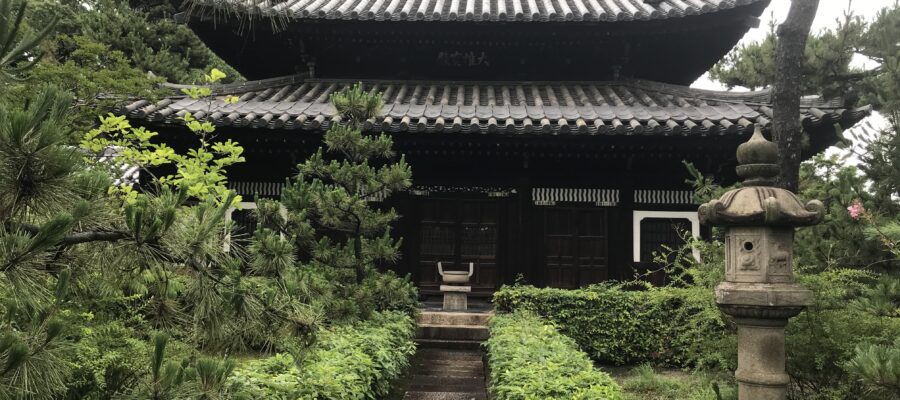堺の名作、南宗寺
大阪府南部の岸和田市での所用を済ませた後、大阪市に戻る途中で堺市の南宗寺を訪問しました。当日はあいにくの雨模様で、降ったりやんだりの繰り返しでした。南海電鉄の湊駅からかなり歩いてようやく到着。北門から入っていきました。
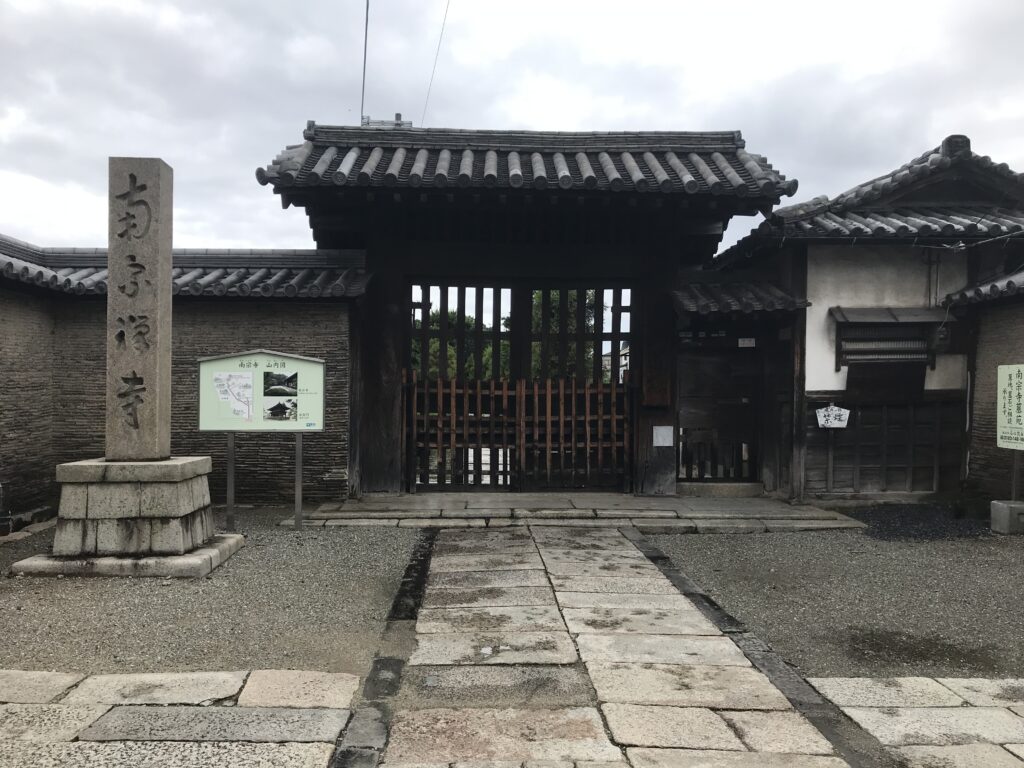
北門を入ってまっすぐ行くと、甘露門という禅宗様と和洋の折衷様式の門が見えてきます。門の周りを柵が巡っていますので、通ることはできませんでした。門から少しの所に三好長吉の像があります。織田信長以前に堺を拠点に、一族で畿内など13ヵ国を治めて、最近では最初の天下人との評価も出てきている三好長吉は、父の元長の菩提をここに弔っています。
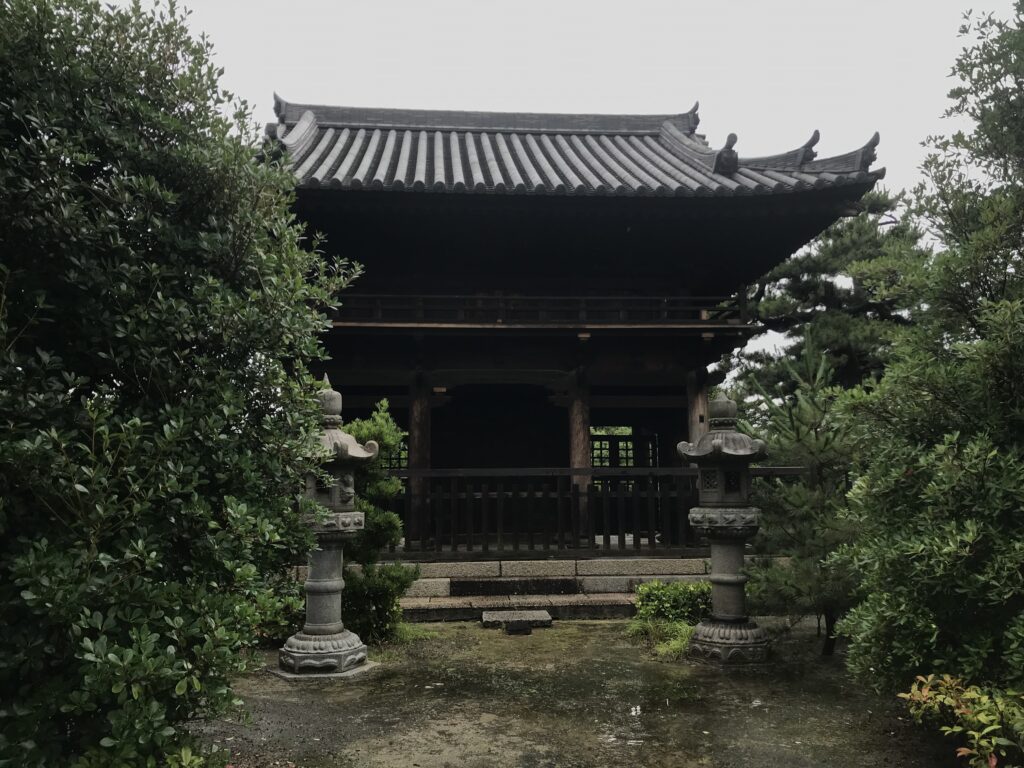
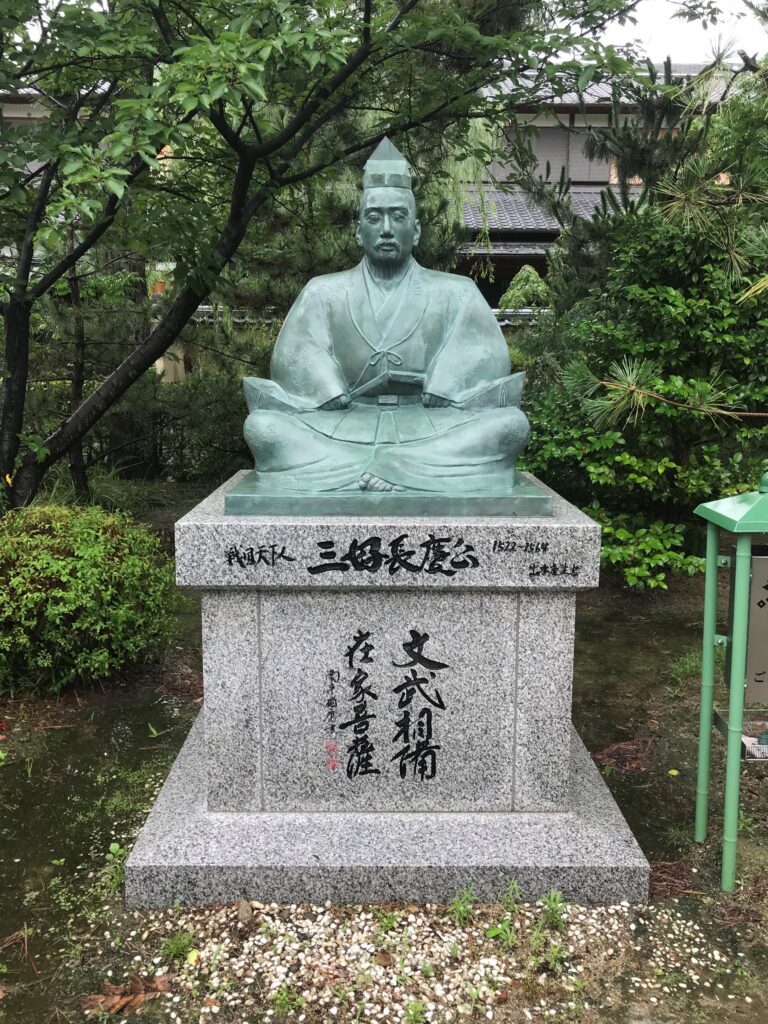
徳川家にも縁がある?
さらに奥に進むと唐門が見えてきます。門は三つ葉葵で、焼失した東照宮に通じる門だったそうです。受付にて拝観料を払うと、そばにいたボランティアガイドのおばさんが声をかけてきました。予備知識がなかったので、案内をお願いすることにしました。
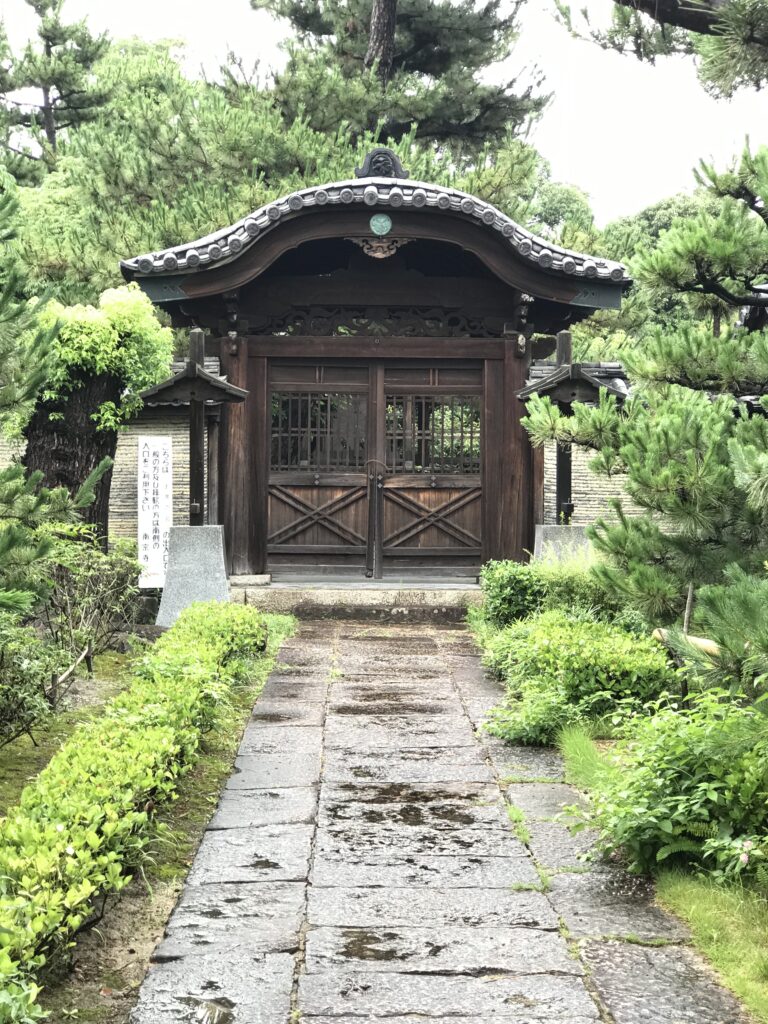
重要文化財の仏殿をはじめ、細かく案内いただけましたが、話が多すぎて、帰るころには何を聞いたか、さっぱり忘れてしまいました。私も通訳ガイドで寺社を案内することがありますが、情報量が多すぎると、聞いている方の消化不良になると、身をもって体験しました。また、拝観料を払うエリアは撮影禁止なのが残念です。枯山水の石庭は写真に撮っておきたかったです。
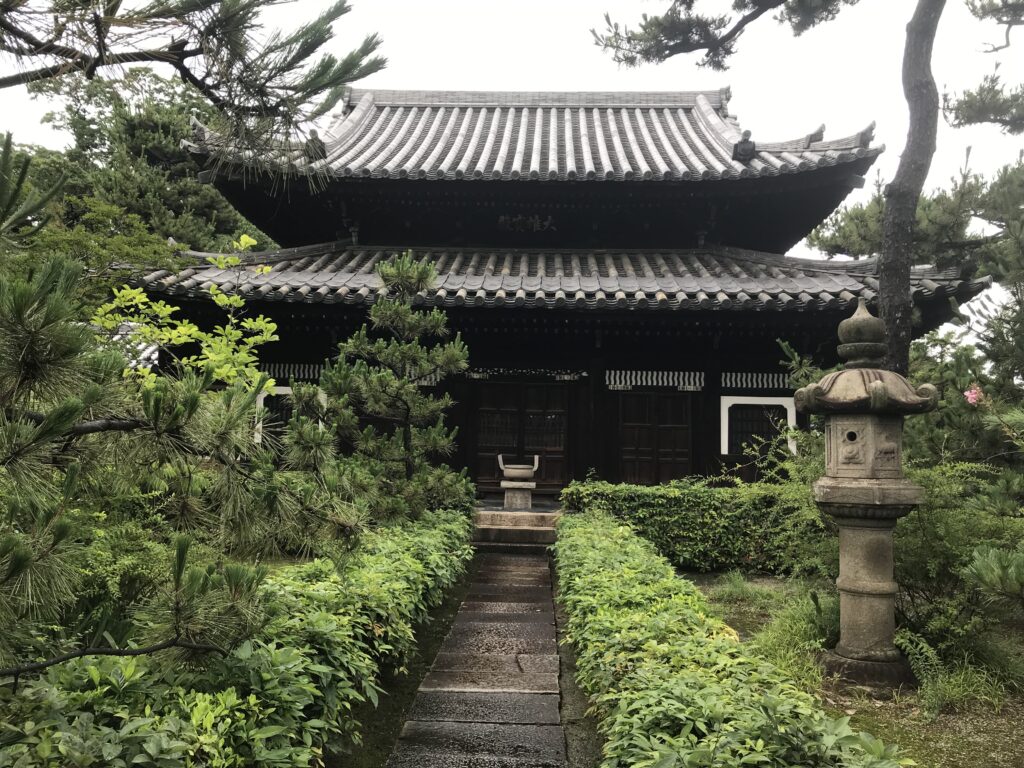
徳川家康にちなんだ伝説
さて、この南宗寺、かつて東照宮がありました。徳川家とのつながりがあるため、何かと伝説のあるお寺です。ここには徳川家康の墓もあります。真偽のほどは定かではありませんが、大坂夏の陣で、実は家康はこのお寺で亡くなったという伝説が残っています。史実を調べると辻褄が合わないようですので、あくまでも伝説として聞いておきました。それほど、大阪では徳川家康の人気がない証左かも知れません。
武野紹鷗遺愛の「六地蔵石燈籠」や千利休遺愛の椿の井戸があるなど、茶道とつながりの深いお寺でもあります。堺に来られた際は、是非お立ち寄りください。(完)
南宗寺の御朱印
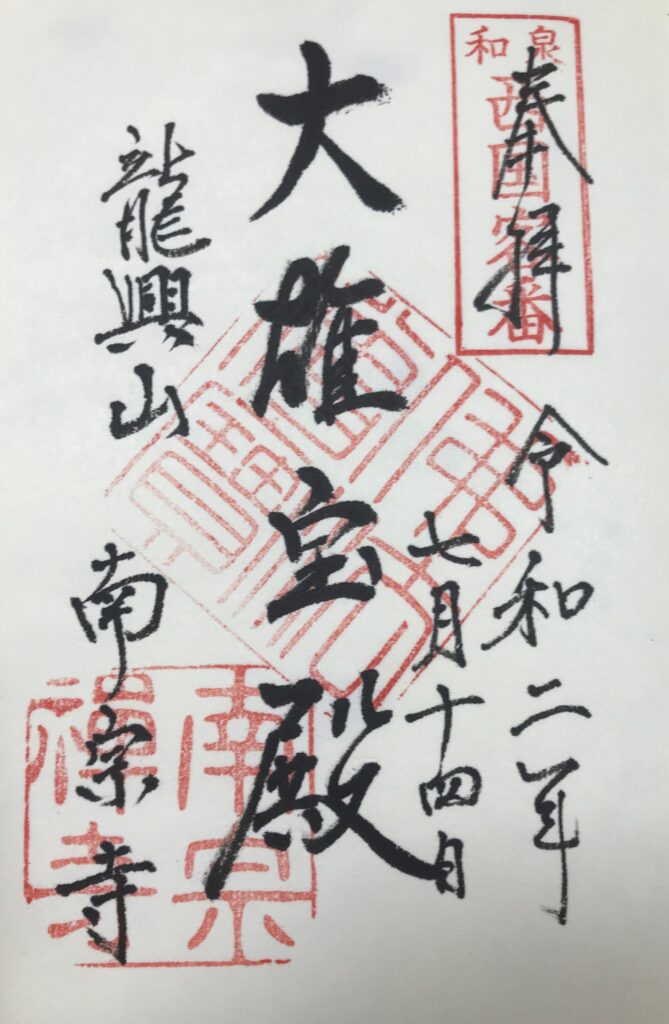
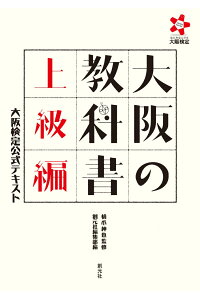
大阪の教科書 上級編 大阪検定公式テキスト [ 橋爪 紳也 ]
価格:2,090円
(2021/9/4 14:02時点)
感想(1件)
Nanshuji Temple
After finishing my business in Kishiwada City in southern Osaka Prefecture, I visited Nanshuji Temple in Sakai City on my way back to Osaka City. Unfortunately, it was raining on and off. I finally arrived after a long walk from Nankai Railway’s Minato Station. I entered the temple through the north gate.
Entering the North Gate and going straight ahead, you will see the gate called “Kanromon,” which is an eclectic style of Zen Buddhism and Japanese/Western architecture. The gate is surrounded by a fence, so I could not go through it. A short distance from the gate is a statue of Nagayoshi Miyoshi. Based in Sakai before Oda Nobunaga, Miyoshi Nagayoshi ruled 13 countries including the Kinai region with his family.
Further in the back, the Karamon Gate comes into view. The gate is a mitsuba hollyhock, and it is said that it was the gate leading to Toshogu Shrine, which was destroyed by fire. After paying the entrance fee at the reception desk, a volunteer guide lady approached me. Since I had no prior knowledge of the area, I decided to ask her to show me around.
She gave me a detailed tour of the temple, including the Buddhist hall, an important cultural asset, but there was so much to talk about that by the time I left, I had forgotten what I had heard. I have experienced firsthand that too much information can cause indigestion in the audience. It is also regrettable that photography is prohibited in the area where visitors pay a fee. I would have liked to have taken pictures of the dry landscape stone garden.
Now, this Nanshuji Temple was once home to Toshogu Shrine. Because of its connection with the Tokugawa family, this temple has some legends. There is also the tomb of Ieyasu Tokugawa here. Although the authenticity of the legend is not certain, there is a legend that Ieyasu actually died in this temple during the Osaka Summer Battle. I have heard it only as a legend, since it does not seem to add up when I check the historical facts. It may be a proof that Tokugawa Ieyasu was not so popular in Osaka.
The temple is also deeply connected with the tea ceremony, with the “Rokujizo Stone Lantern,” beloved by Takeno Jowo, and the camellia well, beloved by Sen-no-Rikyu. If you are ever in Sakai, please stop by. (End)
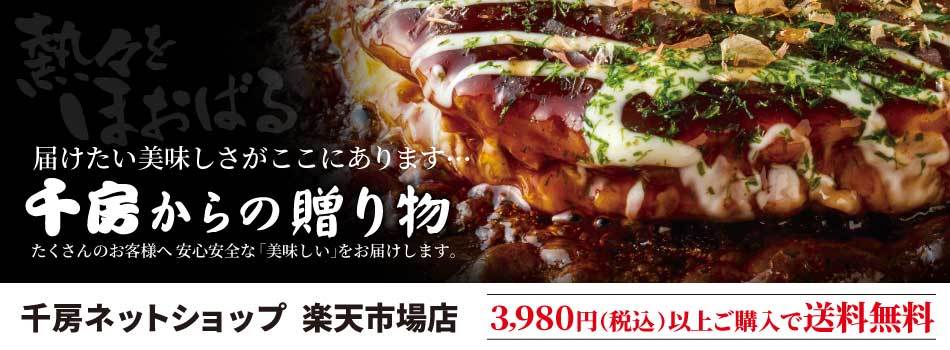
【送料無料】【千房公式】 お好み焼ギフトセット ギフト 贈り物 冷凍 レンジで簡単 本場大阪の味 お祝い 内祝い 粉もん お手軽
価格:5,400円
(2023/1/3 15:05時点)
感想(7件)
Le temple Nanshuji
Après avoir terminé mes affaires dans la ville de Kishiwada, dans le sud de la préfecture d’Osaka, j’ai visité le temple Nanshuji dans la ville de Sakai sur le chemin du retour vers Osaka. Malheureusement, il pleuvait de temps en temps. Je suis finalement arrivé après une longue marche depuis la gare Minato du chemin de fer Nankai. Je suis entré dans le temple par la porte nord.
En entrant par la porte nord et en allant tout droit, vous verrez la porte appelée “Kanromon”, qui est un style éclectique de bouddhisme zen et d’architecture japonaise/occidentale. La porte est entourée d’une clôture, je n’ai donc pas pu la franchir. À une courte distance de la porte se trouve une statue de Nagayoshi Miyoshi. Basé à Sakai avant Oda Nobunaga, Miyoshi Nagayoshi a régné sur 13 pays dont la région de Kinai avec sa famille.
Plus loin à l’arrière, on aperçoit la porte Karamon. La porte est une rose trémière mitsuba, et on dit qu’elle était la porte menant au sanctuaire Toshogu, qui a été détruit par un incendie. Après avoir payé le droit d’entrée à la réception, une guide bénévole s’est approchée de moi. Comme je n’avais aucune connaissance préalable de la région, j’ai décidé de lui demander de me faire visiter.
Elle m’a fait visiter le temple en détail, y compris la salle bouddhiste, un bien culturel important, mais il y avait tellement de choses à dire qu’au moment de partir, j’avais oublié ce que j’avais entendu. J’ai fait l’expérience directe que trop d’informations peuvent provoquer une indigestion dans le public. Il est également regrettable que les photographies soient interdites dans la zone où les visiteurs paient un droit d’entrée. J’aurais aimé prendre des photos du jardin de pierres à paysage sec.
Ce temple Nanshuji abritait autrefois le sanctuaire Toshogu. En raison de son lien avec la famille Tokugawa, ce temple a quelques légendes. On y trouve également la tombe de Ieyasu Tokugawa. Bien que l’authenticité de la légende ne soit pas certaine, il existe une légende selon laquelle Ieyasu serait mort dans ce temple pendant la bataille d’été d’Osaka. Je ne l’ai entendue que comme une légende, car elle ne semble pas correspondre à la réalité lorsque je vérifie les faits historiques. C’est peut-être la preuve que Tokugawa Ieyasu n’était pas si populaire à Osaka.
Le temple est aussi profondément lié à la cérémonie du thé, avec la “lanterne de pierre Rokujizo”, chère à Takeno Jowo, et le puits à camélias, cher à Sen-no-Rikyu. Si vous êtes un jour à Sakai, n’hésitez pas à vous y arrêter. (Fin)
